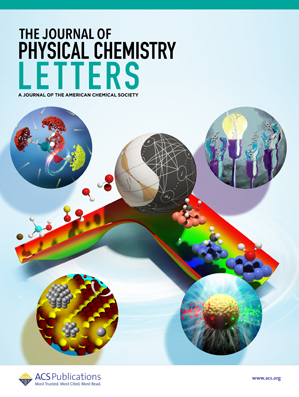高效钙钛矿光伏的胍磺酸盐协同表面重构和缺陷钝化
IF 4.8
2区 化学
Q2 CHEMISTRY, PHYSICAL
引用次数: 0
摘要
钙钛矿薄膜长期存在各种晶界和表面缺陷(GBS),尤其是残留的碘化铅(PbI2),严重影响了相应光伏器件的光电转换效率(PCE)和长期稳定性。在这里,胍胺磺酸盐(GSM),具有所需的- NH2, S = O和Gua+官能团,通过后处理工艺引入到钙钛矿表面,以获得具有更少缺陷的高质量薄膜。研究发现,GSM中的−NH2和S = O有助于钙钛矿中各种缺陷的钝化,抑制了非辐射复合,从而提高了界面载流子传输效率。同时,胍(Gua+)阳离子在后处理过程中促进晶粒融合,实现晶粒大尺寸化,有效降低残留PbI2含量。此外,优化后的钙钛矿膜还表现出更好的能级排列和表面疏水性。结果表明,在适当的GMS处理浓度下,优化后的钙钛矿太阳能电池(PSCs)的冠军PCE从21.69提高到23.85%,并且在存储稳定性和光稳定性方面有显著提高。本文章由计算机程序翻译,如有差异,请以英文原文为准。

Synergistic Surface Reconstruction and Defect Passivation via Guanidine Sulfonate for High-Efficiency Perovskite Photovoltaics
Perovskite films have long suffered from various defects located at grain boundaries and surfaces (GBS), especially residual lead iodide (PbI2), which can seriously impair the photoelectric conversion efficiency (PCE) and long-term stability of the corresponding photovoltaic devices. Herein, guanidine sulfamate (GSM), with desired −NH2, S═O, and Gua+ functional groups, is introduced to the perovskite surface by a post-treatment process to achieve high-quality films with fewer defects. It was found that −NH2 and S═O in GSM contribute to the passivation of various defects in perovskites and suppress non-radiative recombination, thus improving the interfacial carrier transport efficiency. Meanwhile, the guanidine (Gua+) cations promote grain fusion during post-treatment to achieve large-sized grains and effectively reduce residual PbI2 content. Moreover, the optimized perovskite films also exhibited better energy level alignment and surface hydrophobicity. Consequently, the champion PCE of the optimized perovskite solar cells (PSCs) was increased from 21.69 to 23.85% at the appropriate GMS post-treatment concentration, along with a significant improvement in storage stability and light stability.
求助全文
通过发布文献求助,成功后即可免费获取论文全文。
去求助
来源期刊

The Journal of Physical Chemistry Letters
CHEMISTRY, PHYSICAL-NANOSCIENCE & NANOTECHNOLOGY
CiteScore
9.60
自引率
7.00%
发文量
1519
审稿时长
1.6 months
期刊介绍:
The Journal of Physical Chemistry (JPC) Letters is devoted to reporting new and original experimental and theoretical basic research of interest to physical chemists, biophysical chemists, chemical physicists, physicists, material scientists, and engineers. An important criterion for acceptance is that the paper reports a significant scientific advance and/or physical insight such that rapid publication is essential. Two issues of JPC Letters are published each month.
 求助内容:
求助内容: 应助结果提醒方式:
应助结果提醒方式:


